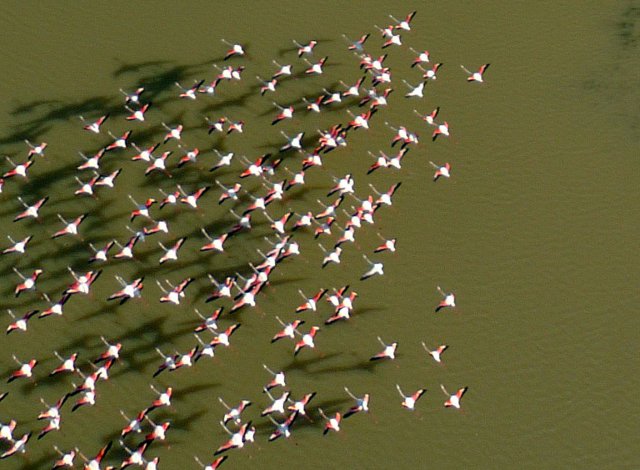
A team from the Swiss Ornithological Station has studied the effects of Unmanned Aircraft Systems (UAS or drones) on wildlife. The use of drones is becoming very popular for a wide variety of purposes in all kind of environments.
They operate at low altitudes, invading animals’ space. It is therefore relevant to analyze whether and to what extent these small aircrafts are perceived by the animals as an intrusion or a danger.
The researchers have performed a systematic review of the scientific literature about animals’ responses to UAS flights in order to determine the probability and intensity of the disturbance and to identify the factors influencing animals’ reactions towards the small aircrafts.
This study shows that birds generally react more strongly to drones than other animals, but there are also differences between species. Some are just more attentive near a UAS, others fly away or attack the platforms. It is noticeable that even animals that do not seem to react to drones could still suffer other effects of the disturbance. Nesting birds, for example, rarely leave their nests, even in the presence of disturbances, but they may experience stress in the form of physiological reactions, or they can hold on until a certain threshold is reached, and then they would attack. Flightless birds and large birds are more likely to show reactions than smaller ones, probably due to a higher range of detection for larger size species, and animal group size increases active reactions towards UAS.
Various factors determine the animals responses to drones: if the aircraft approaches the individuals directly in “targeted-oriented approaches” the reaction is stronger than if the UAS performs more discreet trajectories such as lawn-mower flight patterns, usually conducted for building maps or to create mosaics; Fuel-powered aircrafts trigger more reactions than electrical ones because they are more noisy; Finally, large drones also produce more negative impact than small ones.
UAS are a valuable method for numerous purposes and generally elicit lower negative reactions on wildlife than other techniques for field-data acquisition, such as manned aircrafts, on-foot or car approaches. Thus, when flights are performed in careful ways with low impact systems, they constitute a respectful alternative to other more invasive techniques. However, UAS should be discouraged if the flights are performed just for leisure purposes in sensible natural areas or for unnecessarily disturbing animals with practices such as harassing the individuals or approaching nests for filming. Disturbances are a growing problem for wildlife, which should be taken seriously. Providing the appropriate information to UAS users and authorities with dissemination campaigns, including guidelines with the products and cooperating with manufacturers may help minimizing the impact that these systems can produce on wildlife.
This study enabled the Ornithological Station to make recommendations aimed at minimizing the influence of drones on birds and other animals that can be summarized on the next points:
- Use reliable UAS operated by experienced pilots
- Favour low-noise or small UAS against noisier or larger ones
- Mount the ground control station 100–300m away from the study area
- Conduct missions as short as possible
- Fly at the highest altitude possible
- Avoid maneuvers above the animals
- Favour lawn-mower flight patterns
- Minimize flights over sensitive species or during breeding period
- Avoid UAS silhouettes that resemble predator shapes
- Avoid close-distance direct approaches and favour indirect ones
- Monitor target animals before, during, and after the flight
- For nest inspections, fly at times in which eggs/chicks are out of risk
- If the flights are around aggressive raptor’s territories, perform them at day times when the temperature is low and birds are less prone to fly.
References:
Mulero-Pázmány, M., S. Jenni-Eiermann, N. Strebel, T. Sattler, J. J. Negro & Z. Tablado (2017). Unmanned Aircraft Systems as a new source of disturbance for wildlife: A systematic review. PLoS ONE 12 (6): e0178448
The paper can be downloaded here.
Source: Word Online
